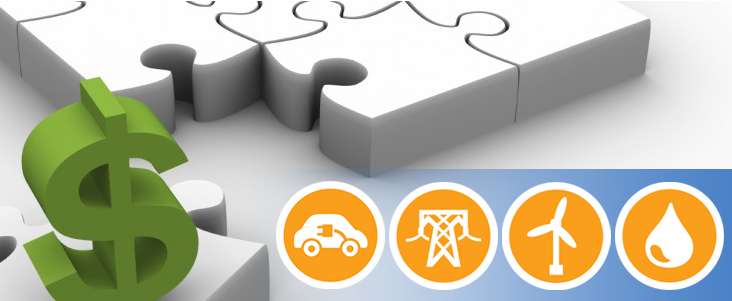
One of the big stories over the last year has been the rapid growth of leading companies executing direct power purchase agreements for renewable energy, as well as energy storage and fuel cells. The American Wind Energy Association’s recently released 2014 U.S. Wind Industry Annual Market Report adds some detail to the story, noting that over 23% of the wind power contracts signed in 2014 were with corporate buyers and other non-utility groups, including universities, military installations, and units of government. In total, these contracts between wind developers and commercial and industrial, governmental, and educational institutions totaled more than 1700 MW in 2014.
These trends have continued into 2015, with a number of of recently announced projects:
- The Dow Chemical Company contracted to purchase the power from a 200 MW Texas wind farm currently under development by a subsidiary of Bordas Wind Energy to meet the energy needs of Dow’s Freeport, Texas, Manufacturing Facility. With the deal, Dow is the first company in the U.S. to power a manufacturing site with renewable energy at this scale, and will become the third largest corporate purchaser of wind energy in the United States.
- Apple is investing $848 million in a 130 MW solar farm to be developed by First Solar, adding to its portfolio of renewable energy investments that already included the electricity needed to power all of the company's server farms.
- Google’s recent $300 million investment in a new fund created by SolarCity to finance $750 million in residential rooftop solar installations. Google’s investment was the company’s largest renewable energy investment to date.
- IKEA and CenturyLink recently announced plans to incorporate fuel cell technology into their energy mixes, with IKEA contracting with Bloom Energy for a 300 kW fuel cell system this summer at its Emoryville, California store and CenturyLink adding Bloom fuel cells to its Irvine, California data center.
- General Motors signed its first power purchase agreement for wind energy, purchasing 34 MW from a Mexican wind farm under development by Enal Green Power SpA to power its manufacturing facility in Toluca, west of Mexico City.
As prices for advanced energy technologies continue to fall – and as these investments becoming increasingly attractive to companies looking to fulfill corporate sustainability and financial objectives – the pace of direct corporate purchases is likely to increase. This influx of capital and increasing number and diversification of counterparties will likely accelerate the already rapid changes taking place in the energy sector, providing additional opportunities for advanced energy firms. If your business is interested in the opportunities this growing market provides, check out AEE’s Access to Renewables Campaign.
On May 28, we will host a free webinar entitled Not Taking 'No' For An Answer: How Microsoft and Walmart Overcame Barriers and Got the Renewable Energy They Wanted. This webinar will feature Brian Janous, Microsoft's eirector of energy strategy, and David Ozment, Walmart's director of energy. Register now by clicking the button below!
Yieldco Activity Continues to Scale, May Soon Reach $100 billion
The dramatic growth of the yieldco market – a market that didn’t even exist three years ago – was one of the big topics at the 2015 Bloomberg New Energy Finance “Future of Energy” Summit. With the market today pegged at $27 billion, Jeff McDermott of Greentech Capital Advisors LLC told audience members he sees the yieldco market growing to $100 billion, driven by the ability to reduce the cost of capital for renewable energy projects and deliver dividends to shareholders that are higher than the returns from corporate bonds.
With more than a dozen yieldcos now operating and many more in formation, the market development is increasingly attracting new participants looking for efficient opportunities to access the capital markets – particularly important given the prohibition of renewable energy companies using the Master Limited Partnership business structure available to companies in the oil and natural gas industries. Earlier this year, First Solar and SunPower, two of the largest solar panel manufacturers in the US, announced a planned joint venture yieldco that will own and operate some of their projects, with SunEdison’s yieldco subsidiary TerraForm Energy announcing it had purchased 168 MW of generating capacity in the first quarter and NRG Yield making headlines by adding fuel cell projects to its yieldco, in addition to wind.
As Green Bond Market Grows, Leading Voices Urge Better Standards
The global green bond market continues to grow at an impressive rate, more than doubling in value between 2013-14, and on pace to double again this year to $80 billion. This growth has been fueled by significant increases in supranational, sovereign and agency bonds and corporate issuances, as well as the emergence of new asset backed securities including securitized solar assets. In a report issued last month, Standard & Poor’s forecast a 58% jump in corporate green bonds, amounting to $30 billion for 2015, in comparison to the $19.1 billion raised by companies in 2014. As part of this growth, some are calling for stronger standards and more specificity in the definition of what can be included in green bonds in order to provide comfort to investors as to the quality of the assets in which they’re investing.
AEE offers an Energy Finance Newsletter, delivering news like this and more to your inbox. Sign up below!

